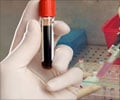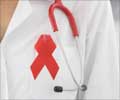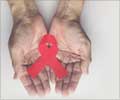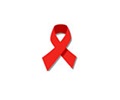HIV/AIDS - Mother to Child Transfer
Antiviral drugs such as AZT given to the mother prevent transmission of HIV to the fetus. Breast milk can transmit HIV virus
HIV can be transmitted from mother to child during pregnancy, during birth, or through breast-feeding. With more than 19 million women worldwide currently infected with HIV or AIDS, mother-to-child transmission of the virus is rapidly becoming a significant source of new infections, especially in developing countries. Before treatment with AZT about 1 in 4 or 5 babies born to HIV-infected women became infected. Now, when treatment is taken, the HIV transmission rate from a mother to her baby is greatly reduced. Administering antiviral drugs to the mother prior to delivery can decrease the transfer of the virus to the baby.
However, the placenta acts as a barrier, restricting transfer of the drugs from the mother to the fetus. The transfer of antiviral drugs is restricted due to a protein 'pump' in the placental cells that separate the maternal and foetal blood.
When the drug is moving across the placenta from mother to fetus, this chemical pump called P-glycoprotein scavenges the drug and pumps it back to the mother's circulation. Hence scientists are investigating different ways by which the P-glycoprotein pump can be turned off. The drug Zidovudine also known as or ZDV has been shown to be particularly useful for preventing HIV from being passed from a mother to her child. AZT is usually taken two or three times daily, starting after the first trimester sometime between 14 to 34 weeks of pregnancy, as well as being taken during labor. Since HIV is found in breast milk it is a better alternative to feed the baby with safe breast milk substitutes like formula.














